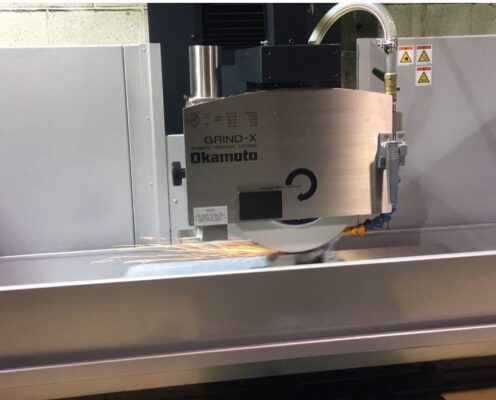At Gentzler Tool & Die, we deliver innovative compound die solutions for high-precision metal stamping applications. By integrating multiple operations into a single press stroke, our compound dies to provide unmatched efficiency and accuracy, making them a preferred choice for manufacturing flat parts with intricate features.
What is a Compound Die?

Compound Die Process
The process is a streamlined manufacturing approach designed to maximize efficiency and precision. Here’s how it works:
- Blank Loading: A flat metal sheet or a pre-cut blank is positioned into the die. Proper alignment is critical to ensure that all operations are performed accurately.
- Single Stroke Execution: The compound die executes all necessary operations—cutting, punching, trimming, or shaping—in one press stroke. For instance, in the case of a washer, the die simultaneously cuts the outer edge and punches the inner hole.
- Part Ejection: Once the stroke is complete, the finished part is ejected from the press, ready for quality inspection or immediate use.
- Precision Inspection: Each part is checked for dimensional accuracy, ensuring it meets tight tolerances and the client’s specifications.
This method eliminates the need to transfer materials between stations, reducing handling and speeding up production.
Applications of Compound Dies
Compound dies are widely used across industries that require flat, precise components. Typical applications include:
- Automotive: Washers, brackets, gaskets, and seals used in engines, transmissions, and structural assemblies.
- Electronics: Flat conductive components like terminals, connectors, and circuit board parts.
- Appliances: Structural panels, backplates, and internal components for household appliances.
- Construction: Heavy-duty brackets, plates, and flat fasteners for structural applications.
- HVAC Systems: Duct plates, mounting brackets, and other flat components used in heating and cooling systems.
Check The Industries We Work With
How Does a Compound Die Differ from Other Dies?
The defining characteristic of a compound die is its ability to perform all necessary operations in one press stroke. This contrasts with other types of dies, such as progressive or transfer dies, which spread operations across multiple stations.
Compound dies are most effective for parts that:
- Are flat and do not require additional forming or bending.
- Require high precision in features such as holes, slots, or edges.
- Need to be manufactured in high volumes with consistent accuracy
Progressive Die vs. Other Dies
Benefits of Compound Die Solutions
Choosing compound die for your manufacturing needs offers several key advantages:
- Efficiency: By combining multiple operations into one stroke, compound dies streamline production, significantly reducing cycle times.
- Cost-Effectiveness: Fewer steps and reduced handling mean lower labor and operational costs.
- Precision: Compound dies deliver consistent results with tight tolerances, ensuring every part meets exact specifications.
- Versatility: Suitable for various industries, from automotive to construction, where flat parts are in demand.
- Scalability: Ideal for high-volume production, ensuring consistent quality across large batches.
Contact Us
Are you looking for reliable compound die solutions to enhance your production capabilities? Contact us today to learn how our expertise in precision tooling and efficient manufacturing processes can meet your specific requirements.
